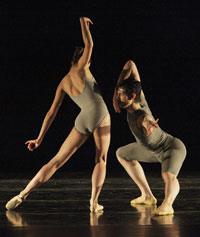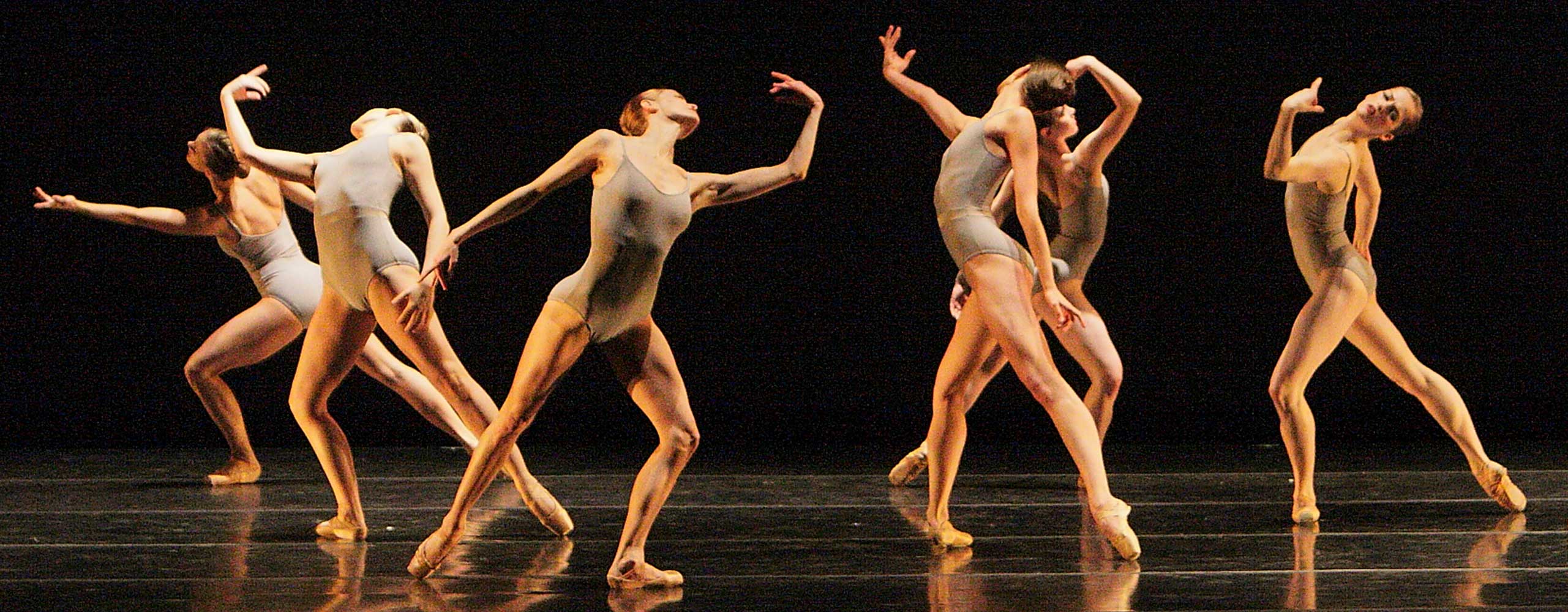
Choreography: Karole Armitage
Music: Einojuhani Rautavaara
Lighting Design: Kirk Bookman
Costume Design: Lily Walker
The music for Arctic Song by Einojuhani Rautavaara combines a recording of arctic birdsong with an orchestra. I was intrigued by this remarkable piece of music because it is unusual and very beautiful. It is melodic while its deep structure is conceptual in a very contemporary way. This allowed me to make a dance combining the classical ballet vocabulary with many other influences and to organize group movement that draws upon nature for inspiration. One important influence is Japanese calligraphy. Western dance has typically been vertical and horizontal in its shape and dynamics. The idea of calligraphy led me to make movement that traces the air in a sinuous, curvilinear mode. This applies not only to individual dancers but also to the duets where, in a call and response-like interaction, a circle in the arm in one dancer might turn into a hip circle for his partner. The mirroring and dialogue of movement is rooted in the ballet tradition, but is done here in ways that draw also upon the influence of street dance. In hip hop the sequential passing of a wave of movement down ones own body and then on to someone else is used here in a lyrical, sensuous way.
Typically when eleven women are dancing together they are all doing the same movement at the same time facing the same direction. In Arctic Song this is rarely the case. I used images drawn from nature as a way to create both harmony and individuality for the group. When animals engage in the same activity, such as flying, they are each doing it in their own way in their own rhythm. I wanted to bring this shared intention and freedom to the stage. Each dancer is doing the same dance step in their own, unique way. This becomes like a forest of movement – each tree has its own unique shape and can be seen from every angle. All are beautiful. This spills into a democratic way of seeing the world as it alludes to the fact that all of the dancers are interesting in their own way.
Nature is deeply rooted in the Japanese aesthetic upon which I draw, but the balance in Rautavaara’s work is exceptional. The music has very strong bursts of sound and great intensity as well as gentle lyricism. The movement reflects this by combining a lyrical flow with intense, almost violent accents. The rawness and beauty mirror our own experience. Tennessee Williams used the image of man as a bird without wings. The music allows us to fly.
– Notes by Karole Armitage
